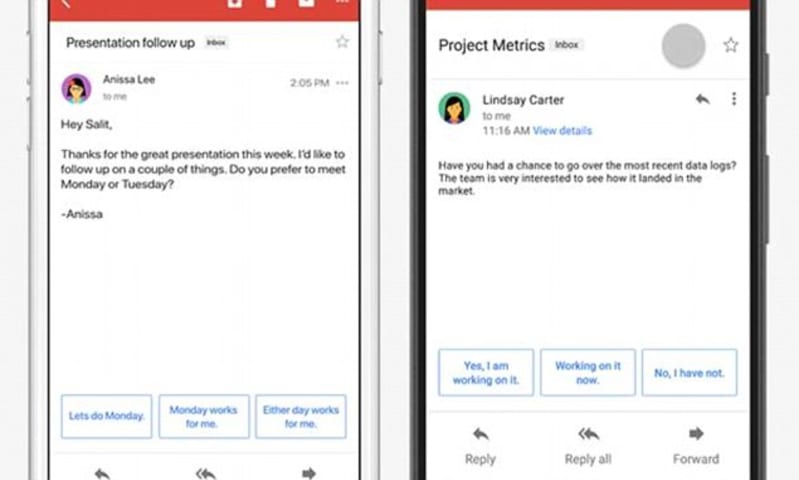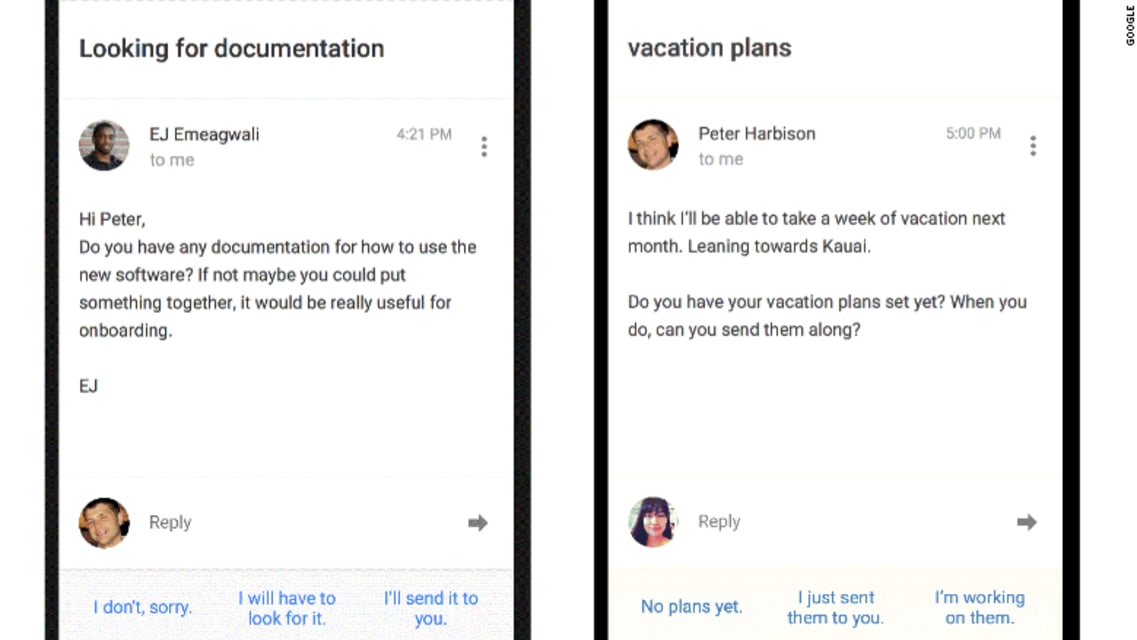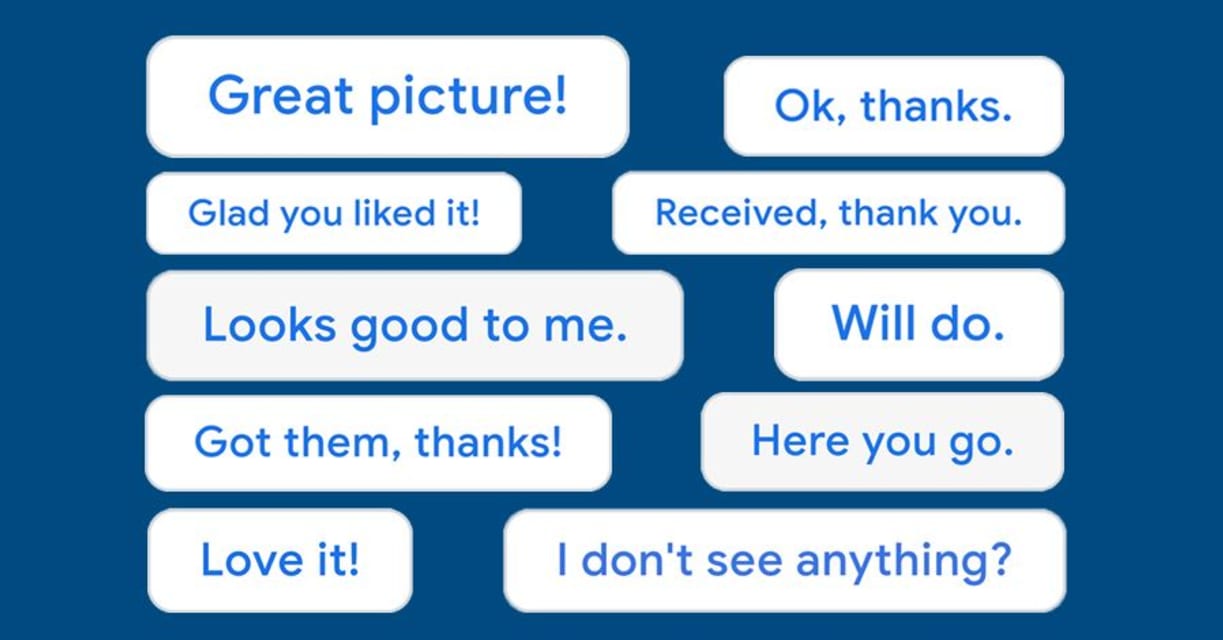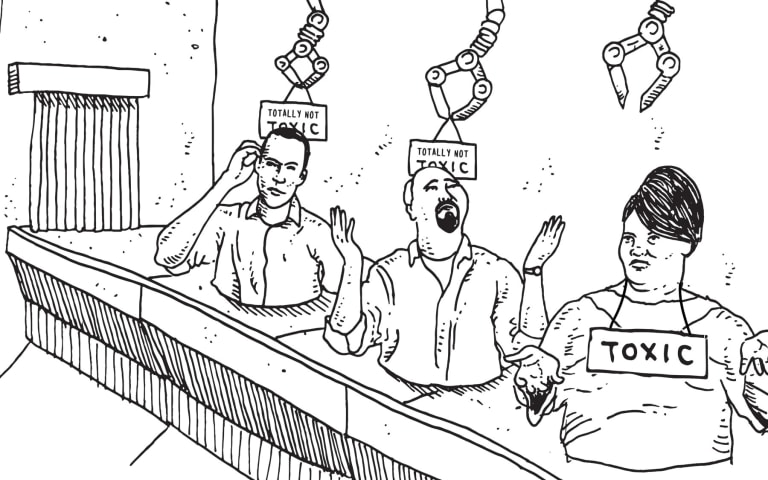Incidente 17: Sugerencias de respuestas inteligentes inapropiadas de Gmail
Entidades
Ver todas las entidadesClasificaciones de la Taxonomía CSETv1
Detalles de la TaxonomíaIncident Number
17
Special Interest Intangible Harm
no
Date of Incident Year
2017
Date of Incident Month
11
Date of Incident Day
03
Estimated Date
Yes
Clasificaciones de la Taxonomía CSETv0
Detalles de la TaxonomíaProblem Nature
Specification
Physical System
Software only
Level of Autonomy
High
Nature of End User
Amateur
Public Sector Deployment
No
Data Inputs
email text
Risk Subdomain
5.1. Overreliance and unsafe use
Risk Domain
- Human-Computer Interaction
Entity
AI
Timing
Pre-deployment
Intent
Unintentional
Informes del Incidente
Cronología de Informes

¿Alguna vez deseó que su teléfono pudiera responder automáticamente a sus mensajes de correo electrónico?
Bueno, Google acaba de presentar una tecnología que al menos se está moviendo en esa dirección. Usando lo que se llama "aprendizaje pr…

Hace solo unos meses, Google realmente comenzó a mostrar su arma secreta más nueva: un cerebro robótico que aprende. Mediante el uso de algoritmos de aprendizaje automático que en realidad se vuelven más inteligentes a medida que practican,…

En realidad, están sucediendo muchas cosas detrás de escena para que Smart Reply funcione. Inbox utiliza el aprendizaje automático para reconocer los correos electrónicos que necesitan respuestas y generar las respuestas en lenguaje natural…

Responder a las solicitudes de correo electrónico de rutina ahora es más fácil con una nueva función de respuesta inteligente para los usuarios de Gmail que reciben su correo electrónico a través de Google Inbox. A partir de esta semana, la…

No todos los correos electrónicos merecen una respuesta artesanal. A veces, todo lo que se necesita es una oración para responder la pregunta candente que alguien ha dejado en su bandeja de entrada, razón por la cual Google está utilizando …

Google pronto escaneará el contenido de sus correos electrónicos y ofrecerá lo que cree que es la respuesta perfecta.
La nueva característica, llamada Smart Reply, identifica los correos electrónicos de Gmail que requieren una respuesta y p…

Cuando Google lanzó Inbox, su aplicación de correo electrónico más reciente del equipo de Gmail, promocionó la capacidad de la aplicación para actuar casi como un asistente. Ahora, un año después, Google está haciendo que la aplicación sea …

El 1 de abril de 2009, Google presentó Gmail Autopilot, un complemento que prometía leer y generar respuestas contextualmente relevantes a los mensajes que se acumulaban en las bandejas de entrada de los usuarios. “A medida que se realizan …

Un sistema diseñado por Google para responder correos electrónicos resultó un poco más amigable de lo que nadie esperaba.
Hay bastantes humanos por ahí que están absolutamente convencidos de que los robots nos matarán en el momento en que s…

Si usa los productos de Google para el correo electrónico, es posible que haya notado esas respuestas sugeridas en la parte inferior de la bandeja de entrada de su dispositivo móvil. Estos brindan a los usuarios opciones para elegir respues…
Imagen: Google: Foto: Konstantin Sergeyev
La característica más reconocible del rediseño recientemente implementado de Gmail es la llamada respuesta inteligente, en la que los bots ofrecen tres respuestas con un solo clic para cada mensaje …

"Gracias por hacérmelo saber."
¿Ha notado un aumento en esta frase que aparece en correos electrónicos, en las redes sociales y en la vida real? ¿Te encuentras diciéndolo a pesar de que tal vez hace un año nunca usarías la frase? ¿Hay una n…

Cuando Jess Klein le envió un correo electrónico a su madre para hacer planes, la respuesta la sobresaltó.
"Genial, nos vemos allí".
La Sra. Klein, una mujer de 38 años de Brooklyn, sospechaba. “¿Por qué mi mamá habla como una chica del val…

Alrededor del 10 por ciento de las respuestas de Gmail ahora se generan con la función de respuesta inteligente, según el Wall Street Journal, y ha estado disponible en las aplicaciones de Gmail desde el año pasado. Ajit Varma, director de …

Después de que los usuarios se quejaron de que la respuesta inteligente de Gmail no era tan inteligente, Google anunció que pronto les dará a los usuarios de escritorio la posibilidad de desactivar la función basada en IA. Aunque la función…

The Wall Street Journal se publica hoy con una breve historia sobre el lanzamiento y la recepción de la nueva función Smart Reply de Gmail, y viene con algunos datos interesantes y anécdotas de usuarios aleatorios y de Google por igual, una…

Recientemente, Google puso a disposición de los más de mil millones de usuarios de Gmail su práctica función 'Smart Reply'.
Pero los primeros prototipos de la herramienta no funcionaron tan bien, según el Wall Street Journal.
En un caso, lo…

IA romántica: Google tuvo que cambiar las nuevas respuestas de respuesta inteligente de Gmail porque seguía sugiriendo "Te amo"

¿Qué opinas de la nueva herramienta Respuesta inteligente de Gmail? Estamos escuchando informes mixtos. Por un lado, es muy útil poder tocar/hacer clic en "¡Muchas gracias!" botón cuando tengas prisa.
Sin embargo, los usuarios informan que …

Hace unos días, recibí un correo electrónico breve y efectivo en mi bandeja de entrada: "¡Suena bien!"
Tuve que hacer una pausa. Aunque esa era la respuesta que quería, estaba organizando una reunión, me preguntaba: ¿realmente envió eso, o …

De: Corinne Purtill (Cuarzo)
Para: Corinne Purtill (Gmail)
lun., 1 oct. 2018 a las 11:08
En su conferencia anual de desarrolladores a principios de este año, Google presentó la "redacción inteligente", una nueva función de Gmail que ayuda a…

Google dejará de brindar soporte para Reply, una aplicación experimental que ofrece respuestas inteligentes a varias aplicaciones de mensajería, como Slack, Hangouts y Messenger. La aplicación se lanzó a principios de este año como parte de…
Variantes
Incidentes Similares
Did our AI mess up? Flag the unrelated incidents
Incidentes Similares
Did our AI mess up? Flag the unrelated incidents





















